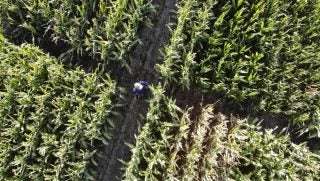Unseasonably hot, dry temperatures and gusty winds over the Labor Day weekend caused Oregon to experience one of the worst fires the state has ever seen. As of Wednesday morning, 35 active wildfires — 368,029 acres — are currently burning in Oregon alone. The combination of a cold front moving in and the wind coming from the east are breaking fire records for the state. Now, ranchers have to make the hard decision on how to protect themselves and their livestock.
The state’s threats come as a dozen other western states, most notably California and Colorado, are besieged by wildfires, which the latest data show have burned more than 4,200 square miles.
Oregon Gov. Kate Brown called her state’s wind event a “once-in-a-generation” disaster that is affecting many areas that are not prone to these disasters and wildfires. Brown approved an emergency conflagration declaration for the Beachie Creek, Lionshead, and Holiday Farm Fire. The Beachie Creek and Lionshead Fires were active overnight in the Santiam Canyon. Holiday Farm Fire is active near McKenzie Bridge
“Almost every year since becoming Governor, I’ve witnessed historic wildfire seasons,” said Governor Kate Brown. “This past weekend, we experienced significant wind that is fueling wildfires with devastating consequences across Oregon, on top of a dire pandemic. For people and families in the evacuation areas, please listen to local calls to evacuate as needed — these lifesaving measures can protect the lives of you and your loved ones, as well as our firefighters. In addition, I am asking all Oregonians to remain vigilant with any activity that could spark a wildfire during this historic wind event. We all need to do our part to help the many firefighters battling multiple fires across Oregon.”
Check out this website for more Oregon Wildfire resources. Oregon is not the only state dealing with wildfires currently, they are battling along with most of western states.
Many farmers and ranchers are taking to social media to raise awareness and to help their local neighbors. Derrick Josi with TDF Honest Farming has been using his platform to keep his followers updated on not only his situation, but also sharing local resources to help his neighbors.
Guernsey Dairy Mama on Facebook uploaded this video to give an insight into what her situation looks like. In the post she said, “At this point our plan is to stick it out. The milk cows have a low fuel fire break around the barn and will be safest there. If it comes down to it the young stock we’ll turn loose and herd into an open field. Please keep the prayers and good thoughts coming especially for our first responders as they are already running on only a couple hours sleep from last night.”
For ranchers dealing with evacuation recommendations and livestock, check out these tips from ReadyforWildfire.org:
- Clear defensible space around your barns, pastures and property just as you do your home. Public Resource Code 4291 requires clearance around all structures on your property.
- Plan ahead, know where you would evacuate the animals Contact your local fairgrounds. stockyards equestrian centers, friends etc. about their policies and ability to take livestock temporarily in an emergency. Have several evacuation routes in mind. If you don’t have your own truck and trailer, make arrangements with local companies or neighbors before disaster strikes. Make sure your neighbor have your contact numbers (Cell phone, work, home, etc.).
- Have vaccination/ medical records, registration papers and photographs of your animals (proof of ownership) and your Disaster Preparedness Kit.
- If you must leave your animals, leave them in a preselected, cleared area. Leave enough hay for 48 to 72 hours. Do not rely on automatic watering systems. Power may be lost.
- Do not wait until the last minute to start evacuating!


